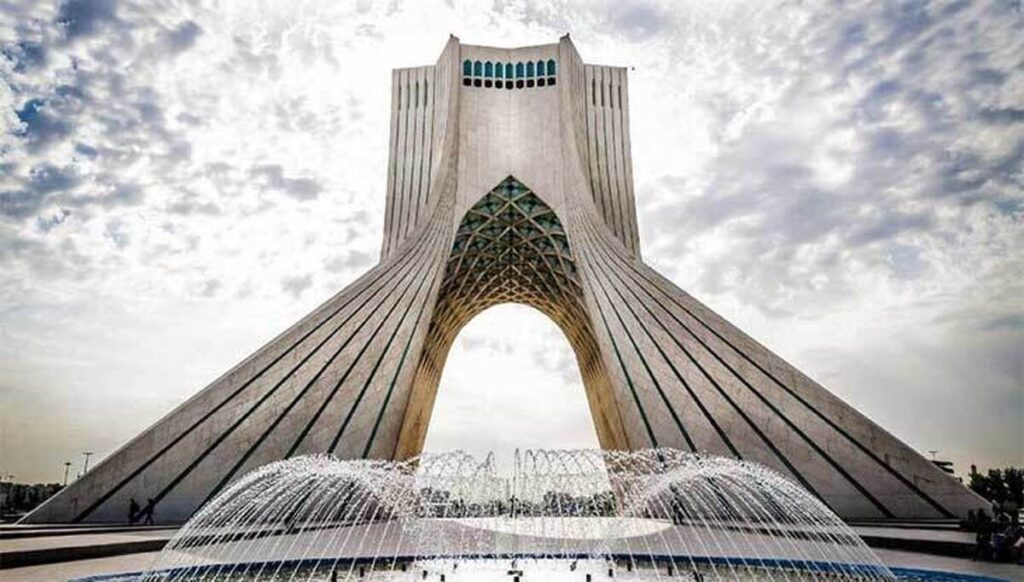
Azadi Tower is one of the most recognizable landmarks of modern Iranian architecture, located in Azadi Square, Tehran. Known as the symbol of Tehran, this tower beautifully blends traditional Persian architecture with modern design. Built in 1971 to commemorate the 2,500th anniversary of the Persian Empire, Azadi Tower has remained one of Iran’s most important cultural and touristic attractions.
History and Design of Azadi Tower
Azadi Tower was designed by Hossein Amanat, a young Iranian architect who was only 24 years old at the time. Commissioned during the Pahlavi era, the tower was intended to represent Iran’s progress and national identity.
1. Fusion of Traditional and Modern Architecture
The design of Azadi Tower is inspired by various historical Persian architectural styles, including:
- The entrance arch, inspired by the Taq Kasra (Sassanid architecture)
- Curved arches and tilework, influenced by Islamic and Safavid architecture
- The overall structure, incorporating modern and minimalist architectural elements
2. Structural and Technical Features
Azadi Tower stands 46 meters tall and is built using 8,000 stone blocks. The stones used for its facade were sourced from Hamedan’s quarries, carefully cut and arranged to enhance the tower’s aesthetic appeal.
The interior of the tower includes various sections, such as:
- Exhibition and cultural halls
- Azadi Museum, showcasing historical and cultural artifacts
- Conference rooms and art galleries
Azadi Square – The Cultural Heart of Tehran
Azadi Square, with Azadi Tower at its center, is one of the most significant squares in Tehran and Iran. It has been a venue for major national and social events, playing a crucial role in Iran’s historical transformations.
Cultural and National Significance of Azadi Tower
Beyond its architectural beauty, Azadi Tower holds great cultural, social, and historical importance. As the gateway to Tehran, it is often the first landmark visitors see when entering the city.
Furthermore, Azadi Tower serves as a symbol of Iran’s national identity, having witnessed many political and social events over the years.
Conclusion
Azadi Tower is one of the most important symbols of modern Iranian architecture, offering a harmonious blend of traditional and contemporary design. More than just a historical monument, the tower represents Iranian identity, progress, and artistic excellence. Today, it remains a key cultural and touristic center in Tehran.


No comments yet.